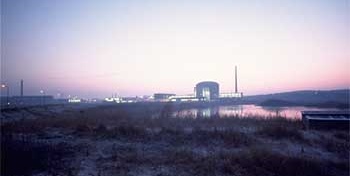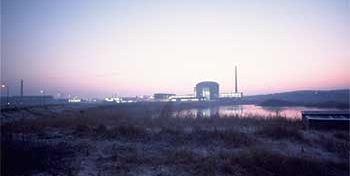Restart for isotope reactor
 UPDATED A nuclear reactor used to produce medical isotopes has been restarted ahead of repairs, such is the need for the radioactive materials it supplies.
UPDATED A nuclear reactor used to produce medical isotopes has been restarted ahead of repairs, such is the need for the radioactive materials it supplies.
An earlier version of this story incorrectly stated the repairs required at HFR were related to safety. World Nuclear News now understands the repairs are in fact meant to ensure the reliability of the reactor.
A nuclear reactor used to produce medical isotopes has been restarted ahead of repairs, such is the need for the radioactive materials it supplies.
The reactor is the High Flux Reactor (HFR) at Petten in the Netherlands. It was shut down in August 2008 by operator NRG due to deformations in coolant pipes which had reduced the thickness of the pipes to 3 to 4 mm from an original design thickness of 9.5 mm.
There has been no loss in cooling function and no leak since the deformations were first discovered in 2005, but the degradation of one of the safety barriers confining nuclear materials prompted the shutdown as a matter of basic nuclear safety.
 |
| Petten |
Unfortunately, the shutdown came as some of the few other medical isotope-producing research reactors around the world also went out of service for maintenance and refuelling. This prompted a global shortage of the short-lived isotope technetium-99m, which is widely used in diagnosis.
Hospitals were able to cope with that shortage through close liaison and good planning. However, a new shortage situation arose on 9 February meaning that no reactors in Europe would be producing and Dutch authorities have made extraordinary arrangements for the restart of HFR.
Molybdenum supply
Available production positions within HFR were almost all immediately filled with targets for the production of molybdenum, which quickly decays during transit to produce technetium-99m. "It is anticipated that by late this week [ending 22 February] the market situation should have fully recovered," said the body. |
All were in agreement that HFR could restart and operate until March 2010 as long as tighter operating limits were imposed and extra precautions including additional leak monitoring, leak path sealing were taken. All the authorities also specified that the restart of operations should not delay the repairs that HFR needs in the long term.
While the safety of HFR is undeniably degraded compared to its design standards, and NRG would normally be violating its nuclear operating license to operate the unit, the authorities confirmed that levels of safety were still within margins required by law.
The Ministry of Housing and Spatial Planning said "Although the risk of operating the reactor without repair is increased, it is acceptable after implementation of additional measures. Therefore, there is room for balancing the pros and cons of a start up of the HFR." The reactor started work in 1961 and is due for replacement by a new unit called Pallas in ten years' time.
Global problem
This is the second recent occasion that an ageing medical isotope production reactor has been required by government authority to operate outside its licence.
Last year an isotope supply emergency hit Canada when the NRU reactor at Atomic Energy of Canada Ltd's Chalk River facility was shut down because required repairs had not been carried out. Within days isotope supplies began to run out and many thousands of medical procedures were cancelled.
The repairs at NRU would have taken too long to carry out, but the Canadian Nuclear Safety Commission insisted on them, and would not allow operation in a temporary configuration. The impasse resulted in an extraordinary overruling of the commission by the prime minster and the ejection of its president.
Last month 80 delegates from 16 countries gathered to discuss fragility in global technetium supply. The meeting, organised by the OECD's Nuclear Energy Agency, saw calls for increased transparency, cooperation and information sharing but also for the construction of new supply reactors. Delegates agreed that it was a government responsibility to ensure the investment climate was conducive to making the new-build investment required to replace the aging reactors key to today's supply.












